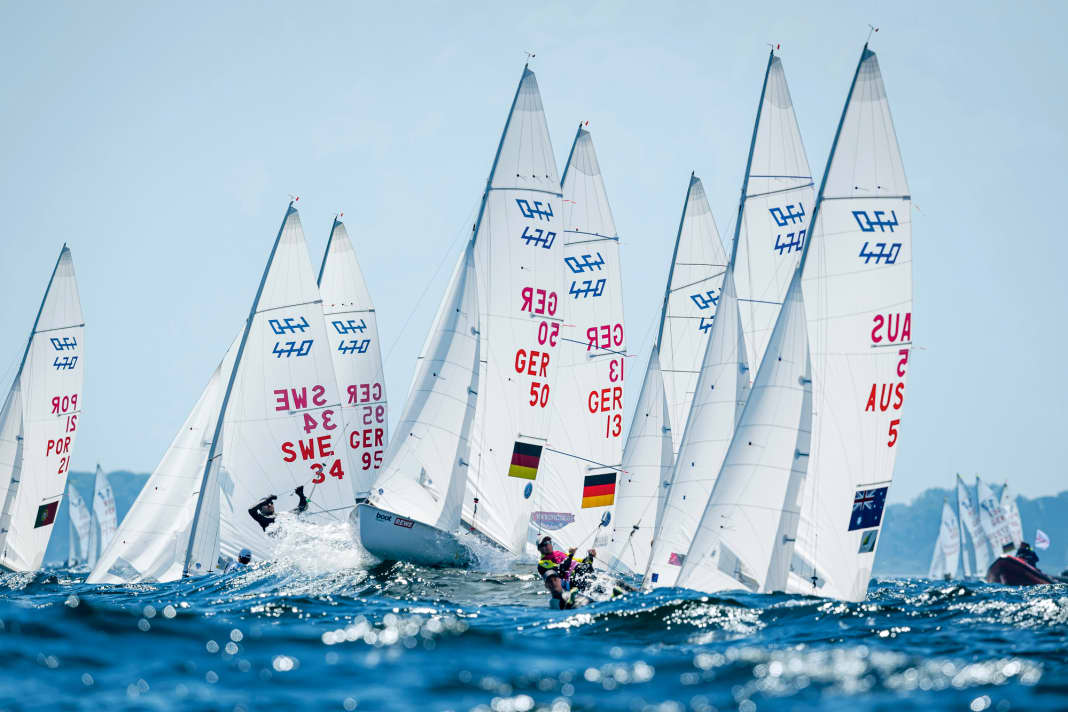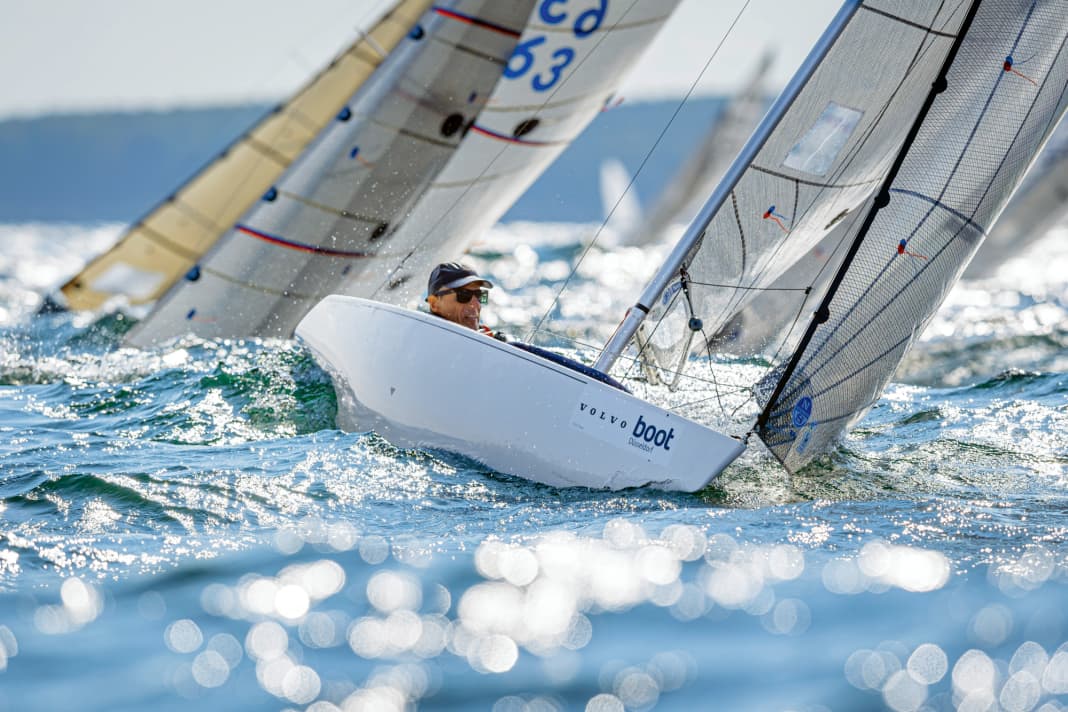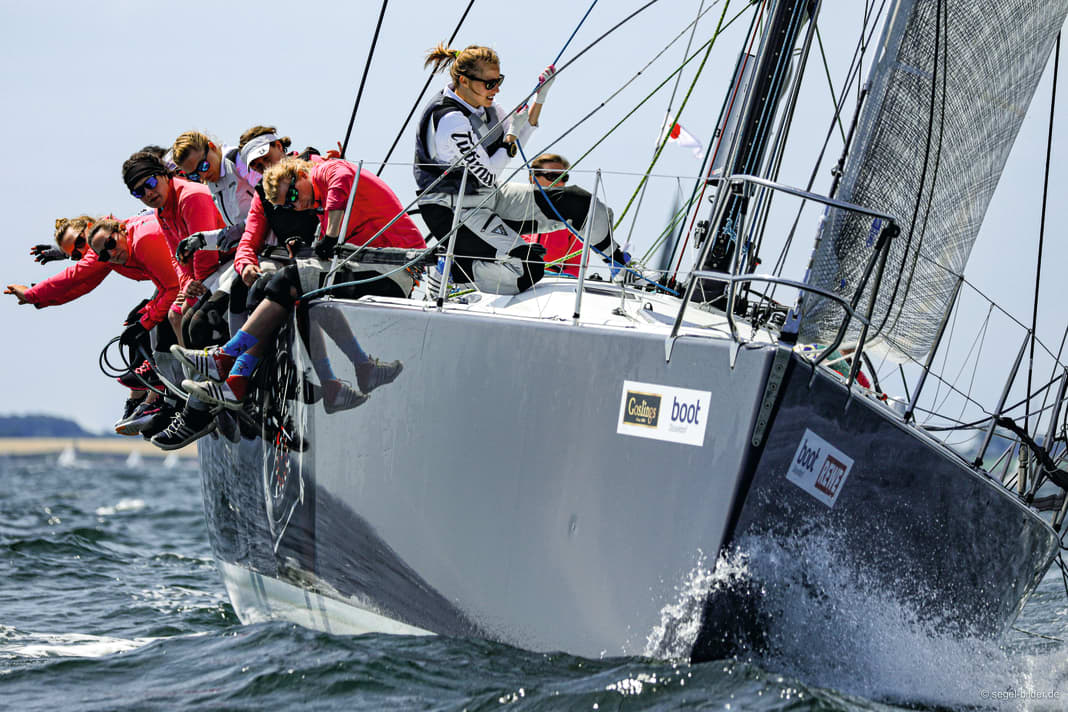





The Olympic classes

470 Mixed
The Olympic double-handed dinghy is sailed with a mixed crew. The racing dinghy is equipped with a centreboard, trapeze and spinnaker. It was designed by André Cornu in 1963 and quickly became popular worldwide. It was awarded Olympic status as early as 1976. The ideal team weight is between 100 and 145 kilograms. Due to scheduling problems, this time the class will start in the international part of Kiel Week.
| Technical data | 470 Mixed |
| Length | 4,70 m |
| Width | 1,60 m |
| Tiefg. | 0,15-1,05 m |
| Weight | 120 kg |
| Sail area | 12,7 m² |

ILCA 6 and ILCA 7
The Olympic single-handed dinghy was known as the Laser until 2020. The Ilca 6, formerly Laser Radial, is sailed by the women. The men compete in the somewhat more expensive Ilca 7, the former Laser Standard. The Laser was designed in 1970 by the Canadian Bruce Kirby, initially under the name "Freetime". It was only renamed four years later. According to the German class association, around 220,000 of the small single-handed dinghies have been sold all over the world to date, and around 4,000 new ones are added every year.
| Technical data | ILCA 6 | ILCA 7 |
| Length | 4,24 m | 4,24 m |
| Width | 1,37 m | 1,37 m |
| Draught | 0,80 m | 0,80 m |
| Weight | 65 kg | 65 kg |
| Sail area | 5,76 m² | 7,04 m² |


49er and 49erFX
The high-performance boat with its narrow, flat bent-chine hull and wide, sweeping wings demands a great deal of acrobatic skill from the athletes. With the gennaker pole extended, the boat has a length of 6.65 metres. The men's 49er took part in the Olympics for the first time in 2008, while the 49er FX was used as a double-handed women's skiff at the 2016 Summer Games in Rio de Janeiro. The 49er FX is designed for a crew weight of 120 kilograms, while the men ideally weigh 140 kilograms.
| Technical data | 49er | 49erFX |
| Length | 4,99 m | 4,99 m |
| Width/with wings | 1,69/2,90 m | 1,69/2,90 m |
| Technical data iQFoil | 8,50 m | 7,50 m |
| Weight/with wings | 70/94 kg | 70/94 kg |
| Sail area | 21,2 m² | 19,6 m² |

iQFoil Men/Women
Thanks to foil, windsurfers in the Olympic class are also taking off - even in light winds. Not only do they have to have strength and stamina, they also have to maintain their balance high above the water with body tension. Men and women start separately, and possible formats are slalom, course race or marathon, depending on the conditions. The best athletes in the preliminary heats make it through to the Medal Series, where the final placings are decided in exciting heats.
| Technical data | iQFoil |
| Length | 2,20 m |
| Width | 0,95 m |
| Buoyancy | 196 l |
| Weight | 11 kg |
| Sail area M/F | 8,00/7,30 m² |
The International Classes
From miniature classics to hot skiffs and small keel sports boats: the second part of Kieler Woche offers the greatest variety






The tall ships
Traditionally, sea-going yachts also take part in Kiel Week. There are also opportunities for beginners



The sporting highlights are provided by the sea-going yachts at classic events such as the Aalregatta from Kiel to Eckernförde and back, as well as on the Stollergrund and in the Bay of Kiel all the way up to southern Danish climes. They will compete in three German championships: the IDM Inshore (Aalregatta 21/22 June + Kiel Cup from 22 to 24 June), the IDM Offshore (Aalregatta 21/22 June + Silver Ribbon 27/28 June) and the IDM Doublehanded (Senate Prize 25/26 June + Silver Ribbon 27/28 June) for duos. The latter two will also lead their challengers around Langeland. And off the Kiel-Wik naval base, the naval cutters will be holding their regattas from 21 to 28 June.
